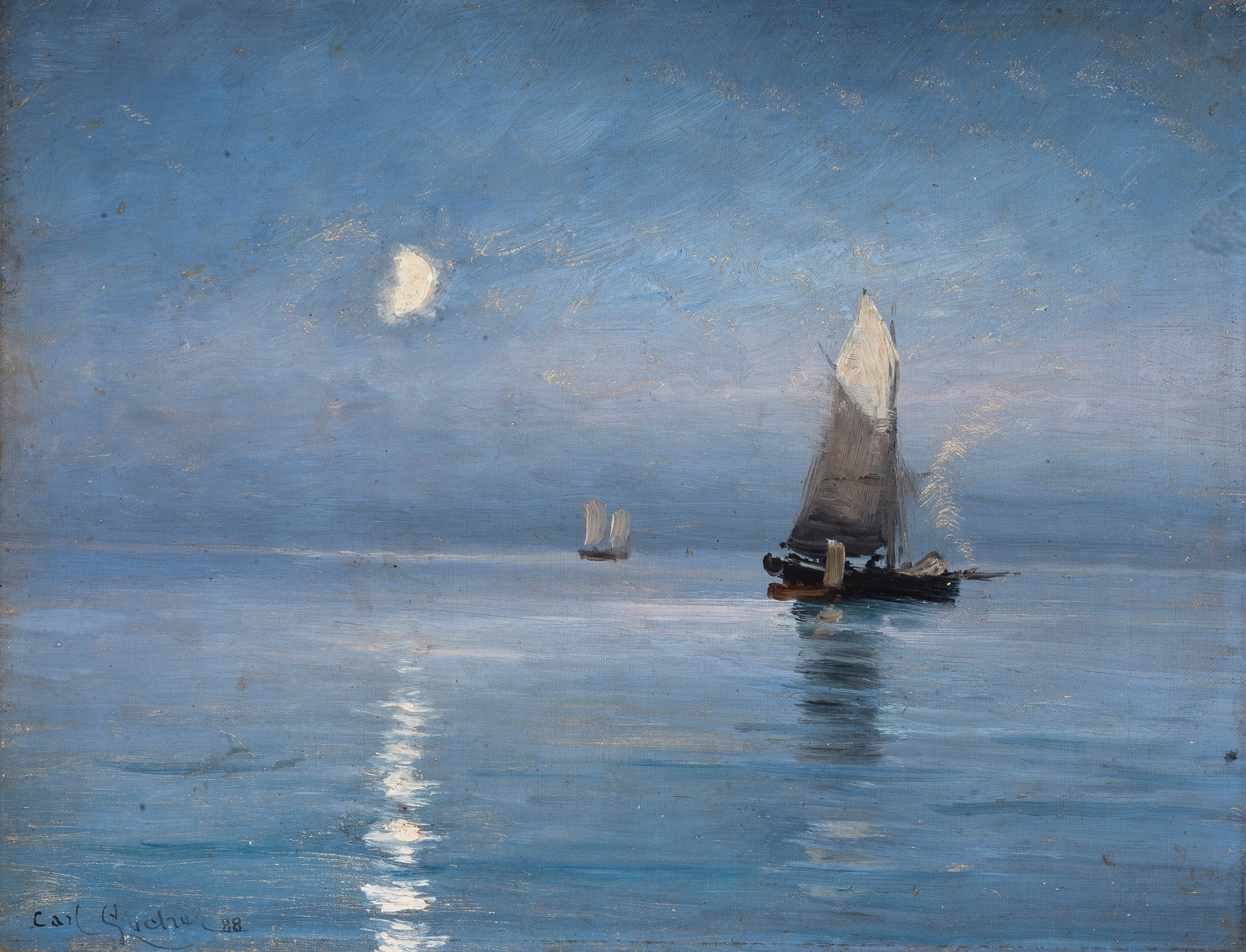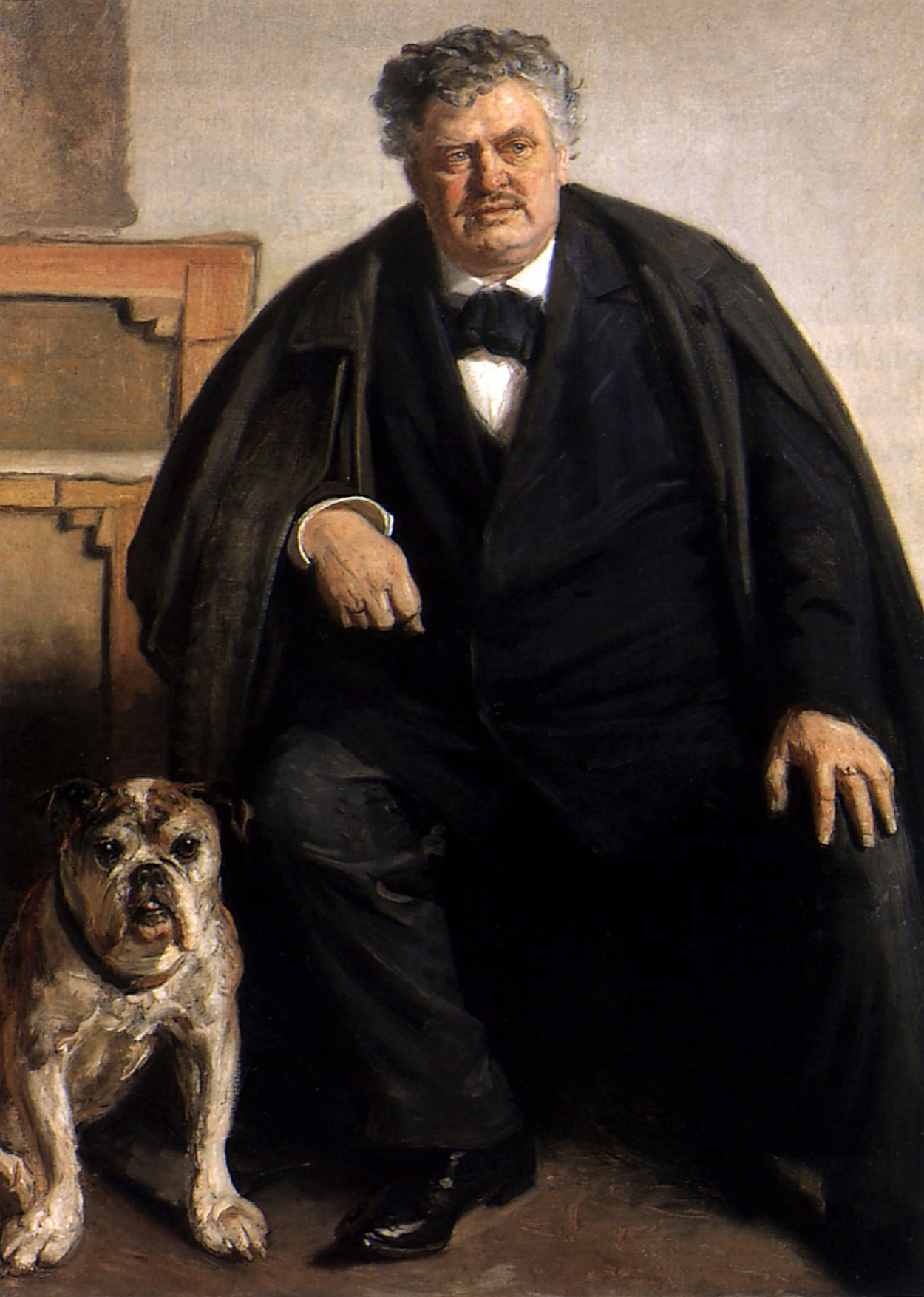Hello there! It is the first Sunday of the New Year and we have prepared something special for you :) From January 3rd until January 24th every Sunday we will present pieces from the fantastic collection of one of our favorite museums in the world - Skagens Kunstmuseer in Denmark. It exhibits an extensive collection of works by members of the colony of Skagen Painters who lived and worked in the area in the late 19th and early 20th centuries. Beautiful things. This time, as it is the second time DailyArt and Skagens Kunstmuseer work togherer, we want to present four pieces under the theme "Twilight Hour". Enjoy!
The sea in Locher's paintings is often unruly and dominated by waves, large and small. This work however radiates a certain mood of calmness, depicting the bluish light of a lovely September evening in a quite nocturnelike fashion. Carl Locher is mostly known in Scandinavia for his etchings of fishermen and ships at sea, and was responsible for teaching the technique to a lot of his contemporaries in the late 18th century. However, he did - like several of the other Skagen painters - start out as a marine painter and stayed true to the subject until his death.
Before Carl Locher enrolled at the Royal Danish Academy of Fine Arts in Copenhagen in 1872, he decided to visit Skagen for the first time. He became extremely fascinated by the surroundings and painted fishing boats or wrecks on the beach or at the water’s edge several times. One of his favorite motives was the mode of transport between Frederikshavn and Skagen at that time – the mail-coach – a horse-drawn carriage that went along the beach for part of the way. In these paintings there are either none or only very small human figures. Locher was in Paris in 1875-76 and again in 1878-79 in order to educate himself further, but he still visited Skagen when he was back at home in Denmark. For many years Locher used a felt tent for studio and accommodation. This tent could be moved around on the beaches surrounding Skagen so that he could be sheltered even in bad weather, while portraying the different kinds of weather and light effects on the shores. It was not until 1910 that he built a house at South Beach of Skagen, where he lived until his death in 1915.


 Carl Locher
Carl Locher